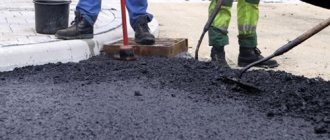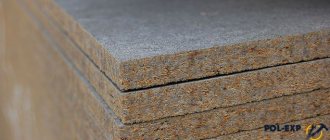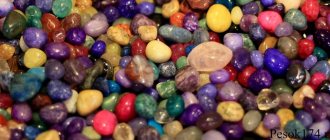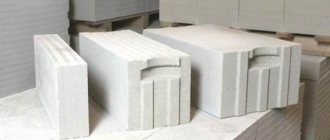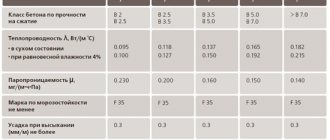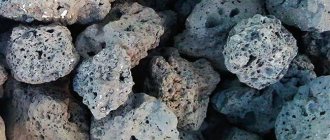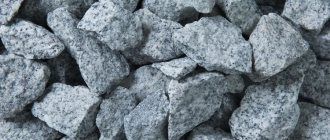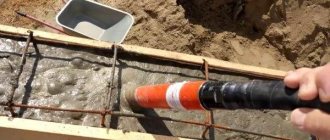When carrying out activities related to the improvement of an apartment, a private house or carrying out major repairs in new buildings, the need arises to level the floor. With limited time to complete the work, it is problematic to pour a cement screed that takes a long time to dry. Cement particle board can significantly reduce the duration of repair work and ensure ideal flatness of the floor surface. Let us dwell in detail on the characteristics, advantages and disadvantages, as well as the specifics of the use of slabs.
Composition of CBPB boards and production technology
While searching for building materials, developers have probably come across the abbreviation DSP.
The abbreviation denotes a cement bonded particle board made from the following components:
- Portland cement grade M400 and higher. The concentration of cement, which acts as a binder, is 60-65%;
- wood chips introduced in an amount of 20-24%. Coniferous wood chips with a size of 60-90 mm are used;
- special additives, thanks to which the CBPB board has increased tensile and compressive strength. The share of additives is up to 2.5%;
- water in an amount of 8-8.5%, added when mixing dry ingredients to achieve the required consistency.
The characteristics of cement bonded particle boards are almost universal.
The production technology of CFB panels involves the following operations:
- Loading into the mixer aqueous solutions containing special components that increase strength and water-resistant properties.
- Addition of wood chips, mineralized in modified aqueous solutions.
- Gradual introduction of Portland cement and water, followed by mixing the mixture until a homogeneous consistency.
- Supplying the cement-bonded particle mixture to pressing equipment to obtain the finished product.
Due to the increased pressing force, there are no voids inside the particle-cement mass. The resulting product, which is based on wood chips and Portland cement, is a thin sheet with a smooth surface and increased strength.
Standard sizes
As already mentioned, CBPB slabs are manufactured in strict accordance with GOST standards, and accordingly have strictly defined external parameters. If we talk about standards, the following sizes apply here:
- Sheet length – 2,700/3,200/3,600 mm.
- Width – 1,200-1,250 mm.
- Thickness – 8-36 mm.
| Dimensions, mm | Sheet area, m2 | Sheet weight, kg | Sheet volume, m3 | Number of sheets in 1m3, pcs | Number of sheets in a pack, pcs | Weight 1m3, kg |
| 2600*1250*10 | 3,25 | 42,25 | 0,03325 | 30,77 | 62 | 1300 |
| 2600*1250*12 | 3,25 | 50,7 | 0,039 | 25,64 | 52 | 1300 |
| 2600*1250*16 | 3,25 | 67,6 | 0,052 | 19,23 | 40 | 1300 |
| 2600*1250*24 | 3,25 | 101,4 | 0,078 | 12,82 | 27 | 1300 |
| 2600*1250*36 | 3,25 | 152,1 | 0,117 | 8,55 | 17 | 1300 |
| 2700*1250*8 | 3,375 | 35,1 | 0,027 | 37,04 | 83 | 1300 |
| 2700*1250*10 | 3,375 | 43,88 | 0,03375 | 29,63 | 66 | 1300 |
| 2700*1250*12 | 3,375 | 52,65 | 0,0405 | 24,69 | 55 | 1300 |
| 2700*1250*16 | 3,375 | 70,2 | 0,054 | 18,52 | 42 | 1300 |
| 2700*1250*20 | 3,375 | 87,75 | 0,0675 | 14,8 | 20 | 1300 |
| 2700*1250*24 | 3,375 | 105,3 | 0,081 | 12,35 | 28 | 1300 |
| 2700*1250*36 | 3,375 | 157,95 | 0,1215 | 8,23 | 18 | 1300 |
| 3200*1250*8 | 4 | 42,6 | 0,032 | 31,23 | 84 | 1300 |
| 3200*1250*10 | 4 | 52 | 0,04 | 25 | 66 | 1300 |
| 3200*1250*12 | 4 | 62,4 | 0,048 | 20,83 | 55 | 1300 |
| 3200*1250*16 | 4 | 83,2 | 0,064 | 15,63 | 42 | 1300 |
| 3200*1250*20 | 4 | 104 | 0,08 | 12,5 | 33 | 1300 |
| 3200*1250*24 | 4 | 124,8 | 0,096 | 10,42 | 28 | 1300 |
It is necessary to clarify that this data is relevant only for products from domestic manufacturers. The European construction market has different standards.
Cement particle board - use in the construction industry
To solve various construction problems, a DSP board is used. Flooring is not the only area of application for cement-bonded particle boards. An expanded range of products allows you to design a floor to suit every taste.
DSP is used for cladding frame houses, while the slab serves as both a binder and a cladding
The technical characteristics and properties of cement particle board ensure its competitiveness with other building materials, as well as an expanded scope of application.
This allows the slabs to be used for various purposes:
- For walls, DSP board is used as a finishing material. The increased moisture resistance and smooth surface of the slabs allows them to be used for façade restoration of buildings;
- interior decoration and arrangement of partitions between rooms. Smooth panels are easy to apply decorative finishes to, as well as wallpaper;
- production of prefabricated or stationary formwork for pouring the foundation. The smooth end surfaces of the plates make it easy to join and seal gaps.
The absence of harmful reagents in the slabs makes it possible to decorate industrial and residential premises with them. After finishing with DSP panels, the garage and workshop will take on a modern look. Tiled plaster is applied well to DSP panels provided that a plastic reinforcing mesh is used. Bonded cement panels are used in construction to solve a range of problems, significantly reducing the labor intensity of work compared to traditional methods. Modern building materials not only reduce labor costs, but also reduce the estimated cost of construction activities.
DSP: classification, selection and scope of application
In private housing construction, the choice between wood and stone is the most fundamental question before starting work. Both materials have their pros and cons. What happens if you combine the beneficial properties of cement and wood in one material? The result will be CSP (cement particle board). This is what we will talk about in this article: we will try to understand what types there are and how easier it is to choose a DSP.
The material is a symbiosis of wood and cement. Unlike other particle boards, DSP does not contain any synthetic resins; the main binding component is cement. Cement with strength grade M500 is used. Wood chips are sorted into fractions and stabilized. Also, chemicals are added to the product (aluminum sulfate, sodium silicate), which prevent the process of rotting of wood ingredients and eliminate the negative impact of the particle component on cement. All ingredients are mixed with the addition of water in an industrial mixer. The products are then formed and pressed dry using compressed air.
Compared to other wood-based boards, DSP has a number of features.
- Environmentally friendly - the material does not contain any synthetic resins, which are found in chipboard, OSB or fiberboard. Therefore, those who are concerned about the formaldehyde content in composite products should pay attention to DSP.
- High stability - cement particle boards have high wear resistance and moisture resistance. They absorb moisture less than other wood-composite products, while maintaining their overall shape - they do not swell.
- Strength allows the use of CBPB as a structural material; cement boards are superior to other composite analogues, such as fiberboard and OSB (oriented strand board).
Frame house with walls made of CBPB.
Oriented strand board is a composite material consisting of large pieces of wood chips, which are arranged in layers and pressed into monolithic slabs. The binding element is formaldehyde resins. Products are sensitive to moisture and are easily deformed under its influence. DSP can be an excellent alternative to OSB in the construction of frame houses.
- Fire safety is another plus of the DSP; the boards do not contain resins or glue, which, when exposed to fire, will burn and generate a large amount of smoke. Portland cement, which is most often used for production, does not support the combustion process. According to the class, the material belongs to low-flammable substances (G1).
- Biological stability - cement is not a favorable environment for the proliferation of fungi and insects, therefore this scourge, characteristic of some types of wooden houses, bypasses houses made of fiberboard.
- Good adhesion to finishing materials - cement particle board lends itself well to finishing and plastering. The sheets have good adhesion to the applied finish.
Speaking about the advantages, one cannot fail to mention the disadvantages of cement slabs. Often the choice in favor of OSB during frame construction is made due to the fact that DSP is more expensive. Another significant disadvantage is the heavy weight. It is difficult to work alone when producing finishing work with cement-bonded particle board products. Also, significant weight makes it difficult to transport products. Cutting causes certain difficulties, since during this process a large amount of cement dust is released.
DSP cutting is carried out using a grinder with a diamond blade.
According to state standards, DSP is divided into two grades depending on the quality of the products. At the same time, the main physical and technical parameters do not differ. According to GOST, the density of both brands should be 1100 – 1400 kg/m3. According to the standard, several standard sizes are allowed. The lengths are 3200 and 3600 mm, the widths are 1200 and 1250 mm. Production of other sizes is allowed by agreement with the end user.
Another important parameter is moisture resistance. It consists of basic humidity and moisture absorption, i.e. the amount of water relative to the total volume that the product can absorb. The basic humidity for both brands of product should be from 6 to 12%. According to standards, moisture absorption should be no more than 16%, while the change in thickness (swelling) cannot exceed 1.5%, while for some types of wood-based panels this figure can exceed 20%.
Now we need to move from general points to differences.
- TsSP-1 - have a smoother surface; for this brand, deviations from the plane of the slab are allowed by only 0.8 mm, oil stains and chipped edges are not allowed. There may be no more than one dent up to 1 mm deep on the surface. The permissible bending strength depends on the thickness of the sheet and cannot be less than 12 MPa for 12 mm thick CBPB; for sheets over 19 mm, the permissible bending strength is 9 MPa.
- TsSP-2 are designed for lower bending strength. For a 12 mm slab this figure should be at least 9 MPa, for a slab over 19 mm - 7 MPa. This brand also has more defects. For example, there may be oil and rust stains on the surface, and there may be dents more than 2 mm deep on the surface (the maximum allowable quantity is 3 pieces).
Some materials are often called varieties of CBPB, although they are not such. It’s just that these products are very similar in production method, structure and properties.
Fibrolite is a cement-fiber material; long wood fiber is used in production to form boards. Fiberboard has low thermal conductivity, fire resistance and is used for insulation. DSP significantly exceeds it in density and strength.
Wood concrete is made from a mixture of shavings, sawdust and wood chips with cement. The material is used not only as thermal insulation, but also for the construction of walls and partitions. Arbolite is produced in the form of blocks, slabs or floors.
Walls made of arbolite slabs retain heat well due to their low thermal conductivity
Xylolite is made from wood chips and lightweight concrete. The main scope of application is self-leveling seamless floors and partitions.
DSP is used as a heat-insulating, finishing and structural material, so the scope of application is quite wide.
- Construction of a frame house - cement slabs are used for the construction of frame houses. In this role, they replace cheaper, but less moisture-resistant, oriented strand boards. DSPs are used to impart rigidity to the frame and create the structural strength of the house. The distance between the posts should be no more than 60 cm. The slabs allow you to form a “pie” of a frame house, which consists of several layers of sheathing, posts, thermal insulation, vapor barrier and wind protection. The outside of the house is covered with siding or plastered. For walls, sheets with a thickness of 12 - 18 mm are usually used.
Sheathing the house frame with cement-bonded particle boards
- Rough finishing of walls - in this case, products made from cement and shavings are used to level the surface of the wall covering. The material is well suited for subsequent painting or wallpapering. In this case, it is better to choose products of the first grade; for finishing methods, when the outer side of the sheets is covered with another material, products of the TsSP-2 brand are used.
Wall finished with DSP sheets
- Roofing work - cement-bonded products are used to create a base for a soft roof. The sheets are laid on the lathing or rafter system. In this case, the thickness of the sheets should be selected based on the pitch of the rafters. Most often, sheets with a thickness of 16 to 24 mm are used.
- Subfloors can also be made using cement bonded particle boards; they provide heat and sound insulation. Installation is carried out on logs or concrete screed. This coating most often serves to level the surface before laying the finished floor. The appearance of the material does not play a special role, since it will be hidden under the laminate or parquet, so you can use the TsSP-2 brand. In this case, it is important to choose the right thickness of the sheet, which when installed directly on concrete can be 18 - 20 mm. When installing the log system, it is affected by the distance between the bars. For gaps of 60 cm, it is optimal to use slabs of 20 - 26 mm.
Laying a subfloor on a joist system
DSP has high moisture resistance and can remain in the ground for a long time; this property is used to create temporary floors directly on the ground. Such coverings are used for placing building materials and for temporary buildings.
- Internal partitions allow you to delimit the internal space in the house into rooms. Due to its good moisture resistance, the material can be used to divide a combined bathroom into two rooms (bathroom and toilet). If painting is planned as a finish, then it is better to choose a grade of material with the least amount of external defects (TsSP-1).
The partition has a complex structure, the frame is made of galvanized profile, mineral wool is used as insulation and heat insulator. DSP acts as an element that gives the structure the necessary strength
- Permanent formwork - CSP can be used to fill foundations or other architectural forms with concrete; they have good wear resistance and tolerate high humidity, while the products do not deform, so they are not removed when the concrete hardens and perform a form-building function for various structural elements. For example, cement bonded particle boards are suitable for creating columns. Compared to the use of other wood boards (plywood, OSB), the material practically does not change its geometry and does not swell.
Formwork made of cement bonded particle boards
- Window sills can also be made from small cement bonded particle boards. For this, you can use slabs more than 10 cm thick.
- Door finishing – due to its moisture-resistant properties, the material can be used for finishing external doors. For example, cement-bonded particle board products are used to improve the sound and heat insulation of balcony doors. In addition, the material can significantly increase the fire-resistant properties of the structure.
- Arrangement of a summer cottage - DSP is used for the construction of fences and fences. The material does not deform from contact with the ground, so it can be used to create beds. Cement slabs are also suitable for the construction of utility rooms for storing tools and gardening equipment.
Beds made of cement bonded particle boards
DSP is a good alternative to conventional wood-based boards based on wood and synthetic resins. The material has high moisture resistance and is harmless to humans. Cement particle boards are equally suitable for interior and exterior decoration, as well as for auxiliary work.
Technical characteristics and features of the DSP board
The advantages of a building material are influenced by the manufacturing technology and composition of the CBPB board, which consists mainly of cement and shavings. What are they?
The frame for the CBPB needs a serious one, capable of withstanding heavy loads
Compared to traditional chipboards, modern material has improved characteristics:
- increased safety margin;
- long period of operation;
- resistance to moisture;
- ability to retain heat in a room;
- high sound insulation properties.
DSP board is used in various climatic zones, maintaining its performance properties.
With a sheet width of 125 cm, the slabs differ in overall dimensions and other characteristics:
- length 240-320 cm;
- width ranging from 0.8 to 3.6 cm;
- specific gravity equal to 1.3-1.4 t/m3;
- humidity not exceeding 12%;
- roughness value at the level of 80 microns.
When absorbing moisture as a result of an unforeseen situation, DSP boards for floors swell by no more than 2%, which is extremely insignificant. Depending on the specific application, slabs are manufactured with a rough or smooth surface. The properties of the panels allow the installation of various types of finishing coatings, as well as paints and varnishes, on the surface.
Cement particle board is wood shavings (accordingly, it is positioned as particle board), pressed in a special way and treated with cement mortar
Advantages and disadvantages
What are the main advantages and disadvantages of slabs over other similar materials? Let's look at the answer to this question in more detail.
Pros and cons of CBPB boards
Advantages of DSP:
- environmental friendliness of the material, as it is made from natural ingredients. DSP does not contain asbestos and formaldehyde-containing substances;
- fungus and mold do not settle on the slabs
- the material is not hygroscopic - this is its main advantage over chipboard;
- DSP does not suffer from temperature changes and does not lose its performance qualities;
- 100% non-flammability of DSP boards allows them to be used in any room. The material can withstand fire for 50 minutes;
- reasonable price , allowing you to purchase material even if you have a small budget;
- significant strength due to multi-layer material. Excellent performance is observed under pressure both from the end of the plate and from any of the other sides;
- the slab does not require additional leveling of surfaces ;
- the material is not afraid of chemical influences;
- cement particle board perfectly resists rotting processes;
- relative impermeability to water - during the day, DSP is able to absorb a maximum of 16% of liquid;
- high noise insulation and heat insulation qualities;
- ease of installation.
DSP boards have many advantages
On a note! It is recommended to use DSP boards when installing a water heated floor system. In this case, it will be possible to create an additional air gap between the heating and the finishing coating, which will significantly improve the result of the work done.
The disadvantages of plates are as follows:
- large mass of material, which makes working with it difficult;
- During processing, the DSP generates a lot of dust . If you have to cut slabs, you should wear a respirator and safety glasses to avoid harm to your eyesight and respiratory organs.
The easiest way to finish DSP boards is to paint them with acrylic or silicone-based compounds, leaving deformation gaps between adjacent sheets
However, the material has many more advantages than disadvantages, which explains its popularity in construction, including for leveling floors. Typically, CBPB slabs are laid on logs - this is the best option for using the material in this area. More often, DSP is installed under laminate, carpet, linoleum, and ceramic tiles.
In general, it can be noted that in most respects, CBPB boards are superior to plasterboard, chipboard and fiberboard, which makes them one of the best building materials. Also, DSP will save a lot of money if a choice is made in their favor.
Cement particle board for flooring
Advantages and weaknesses
Cement floor boards, like other building materials, have advantages and weaknesses. Main advantages:
- environmental cleanliness associated with the absence of harmful substances in the formulation;
- resistance to the development of microorganisms, the formation of fungus and mold;
- increased resistance to moisture compared to chipboards;
- preservation of working properties under significant temperature fluctuations;
- resistance to high temperatures and open fire;
- affordable price level, allowing the use of material on a limited budget;
- increased strength properties that allow them to withstand existing loads;
- ideal flatness of the slabs, which does not require special alignment;
- resistance to aggressive liquids and chemicals;
- the ability to effectively absorb external noise, providing comfort in the room;
- improved thermal insulation characteristics that help reduce heat loss;
- ease of installation work, allowing you to do the installation yourself.
Concrete particle board has proven itself positively when installing heated floors. It allows you to reliably protect the lines and distribute heat evenly over the floor surface.
Weaknesses of the slabs:
- increased weight of building materials, making transportation and installation difficult;
- increased dust formation when cutting building materials into blanks;
- the need to use personal protective equipment to protect the respiratory system and eyes from dust.
Recently, they are increasingly used as a base for finishing.
Thanks to a serious set of advantages, particle-cement boards are popular in the construction industry. In terms of most characteristics, sheet building materials successfully compete with chipboards, wood-fiber panels and plasterboard. By giving preference to DSP boards, it is easy to quickly complete installation and save money.
Application
Using slabs to cover the floor is extremely convenient. To acquire an aesthetic appearance, there is no need for subsequent finishing. Their surface is easily treated with paint of a special composition.
It is also possible to use water-repellent dyes or a regular primer here. Such panels look advantageous against the backdrop of any interior, without disturbing the aesthetics, satisfying even the most picky and demanding taste.
Of course, there is a chance to enjoy the excellent quality of the installed slabs only after the best installation, carried out according to all the rules. If the modules are carelessly secured and poorly processed, this will significantly reduce not only the appearance of the overall structure, but also the service life of the DSP .
But the use of slabs in the process of finishing the walls and floors of various rooms in the right way gives an excellent result as a result of practical use. In addition, if necessary, it provides almost perfect thermal insulation and a very durable coating.
Laying on the floor is done by screwing it to the sheathing using self-tapping screws with a countersunk head. During installation, everything depends on the material of the array. If it is steel, then the screws are screwed in by 10 mm, but if it is wood, they should go into the base of the beam by 20 mm.
It should be remembered that despite its remarkable properties, the basis of the material is wood. This means that the slabs, albeit slightly, have the ability to expand under the influence of moisture. Therefore, when finishing with DSP boards , the presence of an expansion joint is often necessary. This is mandatory:
- next to walls, thresholds, columns and other vertical structures;
- if you plan to change the type and thickness of the floor;
- in case of a large coverage area.
These slabs play an important role in creating formwork. Moreover, in this and other cases, the choice of this particular material will entail many advantages: it will help to build a reliable structure, in a short time and with absolutely minimal costs.
In this case, additional cladding will not be required here, since the structure will already have a completely finished, certainly attractive appearance and high-quality characteristics. For the reasons listed above, such slabs are in great demand.
And when choosing the required thickness of the modules, it is better to obtain preliminary special consultation. It can be clarified that when finishing the floor, the optimal indicator ranges around 30 mm.
It is recommended to use special DSP boards for the facade . This material in this quality looks extremely advantageous in appearance. For the best protection, it is better to choose external coating modules of the maximum possible thickness.
This will protect the overall structure of the structure, as well as the foundation, from negative external factors: strong winds, heavy rains, etc. The advantage of using DSP facade slabs is the possibility of further painting in any desired color, while the surface will appear as smooth as possible, which is very suitable for varied and original design solutions.
At the same time, a combination of contrasting colors looks extremely beneficial so that the foundation, walls and roof of the house are of different colors, which will provide a wonderful result.
They look especially attractive, even stylish, when used for finishing and creating an additional barrier of protection between the internal elements of the building and the external sphere of the DSP slabs imitating brick or stone.
They differ from other types in their composition, built exclusively from the smallest particles of raw materials. Such sheets are in undoubted consumer demand.
Their convenience is that there is no need for subsequent processing with paints and other special compounds. That is, immediately after release they are ready for installation, and therefore are considered a popular finishing material.
DSP board – application in thermal insulation measures
When solving problems of thermal insulation of buildings, the DSP board is used as a cladding material.
Its fastening is carried out using hardware. Sheathing is done from different sides:
- outside the building using pre-installed sheathing or special mastic;
- indoors on a wooden or metal frame, as well as on the surface of the walls using glue.
Decorative finishing can be carried out immediately after completion of installation activities.
Types of plates, manufacturing technology
Fiberboard
Depending on the manufacturing technology, the DSP sheet may have different composition and characteristics.
There are three main types of products: fiberboard, xylolite and wood concrete.
Fibrolite
Fiberboard fiberboard is a product whose specific feature is the composition of its raw materials:
- Portland cement grade not lower than M400;
- wood shavings from 30 to 50 mm long from spruce, pine or fir;
- chemical additives - calcium chloride, liquid glass, lime, aluminum sulfate.
It is allowed to add hardwood shavings if this does not affect the characteristics of the CBPB. Long fibers make it possible to obtain a durable material that is resistant to bending loads.
Characteristics of fiberboard
GOST 8928–81 which is still in force , products are produced in three grades that correspond to the density of the material:
- F-300 - 250–350 kg/m³;
- F-400 - 350–450 kg/m³;
- F-500 - 450–500 kg/m³.
Dimensions of fiberboard fiberboard:
- length 2400 or 3000 mm;
- height - 600 or 1200 mm;
- thickness - 30 (except brand 300), 50, 75, 100 or 150 mm.
Brand F-300 is used as a heat-insulating material, and F-400 and F-500 are used as structural, heat-insulating and sound-proofing products.
Using fiberboards, three-layer structured insulating panels (SIPs) are made. Fiberboard sheets are the outer layers, between which polyurethane foam or foam boards of various thicknesses are glued.
Foreign manufacturers have adopted different markings:
- GB 1 - low density slabs (250–450 kg/m³);
- GB 2 - medium weight products (600–800 kg/m³);
- GB 3 is the most durable grade with a density of 1050 kg/m³.
The abbreviation GB stands for Green Board - green, i.e. ecological product.
There is no strict size specified for GB slabs ; manufacturers themselves have the right to determine this indicator. This is convenient for repairing small spaces, as it allows you to select sheets of the required size and generate less waste.
High-density products, regardless of the manufacturer, can be produced with a non-uniform sheet structure . The inner layer is often made less dense with coarse filler, and the surfaces are made of a durable composition with fine sawdust.
Xylolite
Xyolite
Xyolite is a white or yellowish material , similar in properties and characteristics to wood-cement and gypsum-wood boards. The product belongs to lightweight concrete. Sometimes other names are used - treelite or bisholite .
For production, small sawdust or flour, grinding dust from woodworking industries, and sometimes bran - waste from flour mills - are used.
The structure of the outer surface depends on the size of the fraction - the smaller the filler particles, the smoother the sheet turns out. The highest quality products do not contain bark or debris, which increases the strength of the material.
The binder of xylolite is Sorel cement - caustic magnesite dissolved in magnesium chloride, magnesium sulfate or iron sulfate.
All components are natural materials and do not emit radiation.
To add color, organic or inorganic dyes are added to the mixture, sometimes in different colors to create a contrasting pattern.
To increase strength and reduce costs, some manufacturers introduce additives that do not reduce the quality of products - peat and cork flour, pumice, slag, talc, etc.
By changing the composition of the raw material, xylolite is obtained with different properties and characteristics :
- density - 900–1400 kg/m³;
- thermal conductivity - 0.2 - 0.5 W/(m*°C).
When exposed to shock loads, dents appear on the xylolite, but the sheet does not collapse. The material is resistant to acids and alkalis, oils, salts, and organic solvents.
Xylolite does not burn , but only chars under the influence of open fire.
Accelerated corrosion occurs in places where xylolite and metals come into contact, so when installing structures it is necessary to ensure insulation of materials.
When wetted with water, the slabs do not become slippery, which has a beneficial effect on consumer properties.
In addition to the traditional use for CBPB, the following are made from xylolite :
- bases for pouring floors in railway cars;
- columns and wall beams;
- stair steps;
- plates for mosaic floors;
- frames for mirrors and pictures;
- covering of chimneys, flowerpots of grottoes, gazebos.
The material can be painted.
Products based on bischofite are used in medical rooms for wall decoration.
Geometric dimensions of the sheets: length 1200-3600 mm, width - 60-1200 mm, thickness of xylolite CSP - up to 100 mm.
Arbolit
Arbolite slabs are similar in characteristics to fiberboard. The difference lies in the composition of the raw materials .
In addition to shavings, crushed stems of cotton or rice straw and hemp bonfire are used. The binder is Portland cement of a grade not lower than M400. The material strongly absorbs moisture , so it is unacceptable to use it for construction if the humidity exceeds 75%. In wet rooms and outside buildings, slabs must be covered with a moisture-proof finish.
According to their purpose, slabs are divided into heat-insulating and structural-thermal-insulating .
GOST R 54854-2011 prescribes the production of three types of wood concrete :
- dense,
- porous,
- large porous.
The higher the density, the stronger the product.
The specific gravity of the material ranges from 250 to 950 kg/m³.
Arbolite slabs are used for the manufacture of:
- thermal insulation;
- SIP panels;
- non-load-bearing, self-supporting and load-bearing walls and partitions in low-rise construction;
- thermal liners for walls;
- permanent formwork.
The thermal conductivity coefficient depends on the density of the material and can range from 0.07 to 0.19 W/(m*°C) for dry operating conditions. To calculate the thermal conductivity of external walls, parameters from 0.11 to 0.27 W/(m*°C) are used.
Recently, the production of wood concrete slabs has been gradually reduced due to low strength. They are replaced by DSP boards manufactured in accordance with GOST 26816-2016.
Cement bonded particle board - flooring applications
Cement particle board has proven itself to be beneficial when laying subfloors.
The main advantages of DSP are considered to be high strength and durability
The use of building materials consists of laying finished panels on various types of bases:
- a flat surface of a wooden or cement floor;
- wooden logs installed at equal intervals.
Ceramic tiles can be glued to the surface of the slabs, flooring can be laid, and laminate or parquet can be laid. The properties of the material are preserved for decades, provided that the installation technology is followed.
Cement particle board - choosing material for the floor
The cement particle board is selected depending on the complexity of the tasks being solved:
- when installing panels on logs, material with a thickness of 2-2.6 cm is used;
- when laid on a cement base, the minimum thickness is 2.4 cm.
When purchasing floor slabs, pay attention to the following points:
- availability of a certificate of conformity;
- absence of cracks and defects;
- flatness and surface roughness;
- image of the manufacturer.
Also check the availability of a sanitary and hygienic certificate confirming the environmental friendliness and harmlessness of the product.
The surface of the cement board is smooth and even, due to which it is very popular among finishers who use it as a base for decorative finishing.
We are preparing for the installation of a coating made of CBPB boards
The surface preparation process for forming a rough base from CBPB panels is simple and consists of performing the following activities:
- dismantling rotten boards, logs and replacing them with dry wood products;
- carefully sealing cracks using wood putty;
- coating the wooden surface with a primer that increases adhesion;
- restoration of the surface of concrete bases and sealing of defects.
The optimal solution is to lay the slabs on beams with an interval between supports of 50-100 cm. When installing panels on joists, waterproofing material should be laid and thermal insulation should be performed.
To complete the work, you should prepare materials and tools:
- beams with a section of 15x10 or 5x10 cm;
- cement particle boards;
- antiseptic impregnation for wood;
- waterproofing materials and insulation;
- hardware for assembling the supporting structure and fastening the slabs;
- electric drill and hacksaw.
Having completed the preparatory activities, proceed to arranging the floor.
To avoid deformation during operation, gaps are left between the plates
Installation features
Slabs based on a cement-bonded particle mixture are easy to process. For cutting you will need a hacksaw with fine teeth. Large teeth contribute to the formation of dust and make the edges of the part uneven, so this tool is not suitable for sawing CBPB.
When arranging a dry screed, a concrete or wooden covering is used as a base for the slabs. It is also possible to lay the sheets on a frame, the cells of which are pre-filled with insulating material (mineral wool, foam plastic, expanded clay, or another type of dry filler).
The plates are fixed with self-tapping screws or using an adhesive mixture. The glue must be evenly distributed over the surface of the material with a notched trowel, leaving no gaps. This will help avoid deformation of the material. It is also important to generously fill the joints with adhesive to obtain a monolith. Self-tapping screws are screwed in at intervals of 35-50 cm.
When cladding the external walls of a building with DSP, an installation method is used that involves arranging sheathing. Frame parts can be wooden or made of metal profiles. When choosing a tree, it is recommended to pre-treat it with an antiseptic solution to protect it from premature aging and microbiological processes.
Sequence of actions for constructing a floor from CBPB boards
Let's look at how a slab is laid on a balcony. Follow the sequence of actions:
- Lay a layer of heat insulation at the locations of the beams.
- Install joists at intervals of 0.3-0.4 m parallel to the wall.
- Secure the cross beams using screws and angles.
- Fill the space inside the lattice structure with insulation.
- Cut the slabs into pieces of the required size and lay them across the joists.
- Attach the particle-cement panels to the joists using self-tapping screws.
At the final stage, it is important to carefully seal the seams using adhesive.
Arrangement of the floor using DSP
Let's consider the arrangement of a floor made of cement-bonded fiberboard on joists using the example of a balcony.
Step 1. A layer of insulation is laid under the logs. The logs are installed parallel to the walls at a distance of about 30-40 cm from each other.
The joists are installed on top of the insulation
Step 2. Cross bars are installed and the sheathing is created. The wooden blocks are connected to each other using metal corners and self-tapping screws.
Cross bars installed, sheathing ready
Step 3. The space between the joists is filled with insulating material.
Laying insulation
Step 4. DSP boards of the required sizes are laid across the longitudinal joists. The width of the piece of material should be slightly less than the width of the balcony (by 5-10 mm).
Laying CBPB boards
Step 5. The plates are fastened with self-tapping screws to the joists. The gaps between the DSP boards are sealed with an adhesive composition.
Fixing slabs with self-tapping screws
Video - Laying tiles on DSP
Cement particle board - installation specifics
When performing work, observe the following recommendations:
- treat wood with antiseptic solutions or waste oil;
- use square wooden beams with a side of 5 cm when laying slabs on a concrete base;
- control the horizontal surface of the wooden frame and laid slabs;
- leave compensation gaps around the perimeter of the base formed from slabs.
Please also pay attention to the correct preliminary cutting of the material before starting work.
Recommendations
The DSP board will facilitate the formation of level bases, reduce the duration of work and reduce costs. Using building materials, it is easy to build floors for a house from foam blocks. When thinking about how to cover a cellar, consider using DSP panels. Using slabs, you can construct a monolithic foundation slab. This base and the Swedish foundation slab are comparable in thermal insulation properties. When engaged in construction, it is worth studying the difference between PC and PB boards. It is quite possible that this will be useful when choosing a material.


